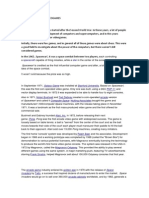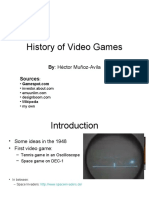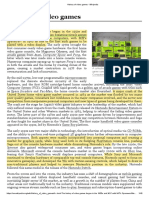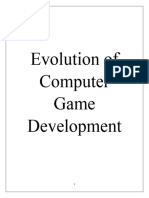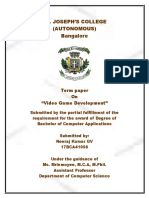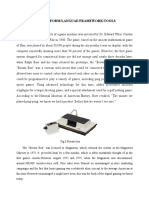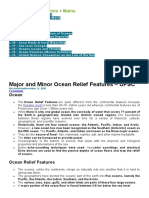0% found this document useful (0 votes)
115 views12 pagesA Brief History of Gaming
This document provides a brief history of gaming from the early 1950s to the present day. It outlines the development of various gaming platforms over time, including early computer games in the 1950s-60s, the rise of arcade games and consoles in the 1970s-80s led by Atari and Nintendo, the entry of Sony, Sega and Microsoft in the 1990s-2000s, and the latest 7th generation consoles from Sony, Microsoft and Nintendo. Key milestones and innovations are highlighted such as the introduction of 3D graphics, online multiplayer, and DVD technology on gaming platforms.
Uploaded by
Pablo Jose Cruz SalazarCopyright
© Attribution Non-Commercial (BY-NC)
We take content rights seriously. If you suspect this is your content, claim it here.
Available Formats
Download as PPT, PDF, TXT or read online on Scribd
0% found this document useful (0 votes)
115 views12 pagesA Brief History of Gaming
This document provides a brief history of gaming from the early 1950s to the present day. It outlines the development of various gaming platforms over time, including early computer games in the 1950s-60s, the rise of arcade games and consoles in the 1970s-80s led by Atari and Nintendo, the entry of Sony, Sega and Microsoft in the 1990s-2000s, and the latest 7th generation consoles from Sony, Microsoft and Nintendo. Key milestones and innovations are highlighted such as the introduction of 3D graphics, online multiplayer, and DVD technology on gaming platforms.
Uploaded by
Pablo Jose Cruz SalazarCopyright
© Attribution Non-Commercial (BY-NC)
We take content rights seriously. If you suspect this is your content, claim it here.
Available Formats
Download as PPT, PDF, TXT or read online on Scribd
/ 12





